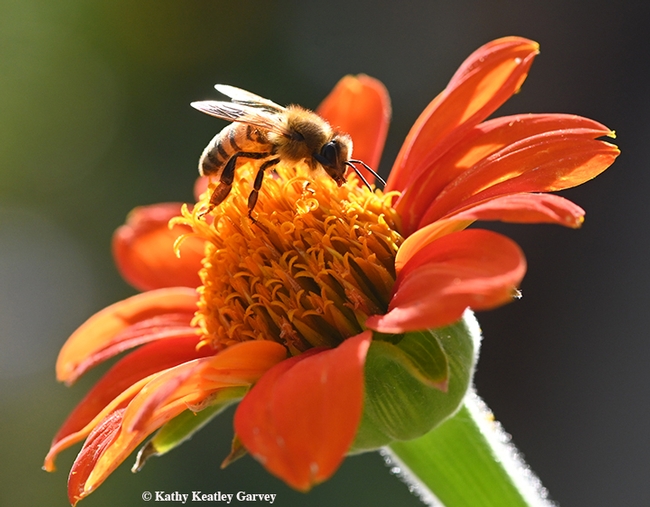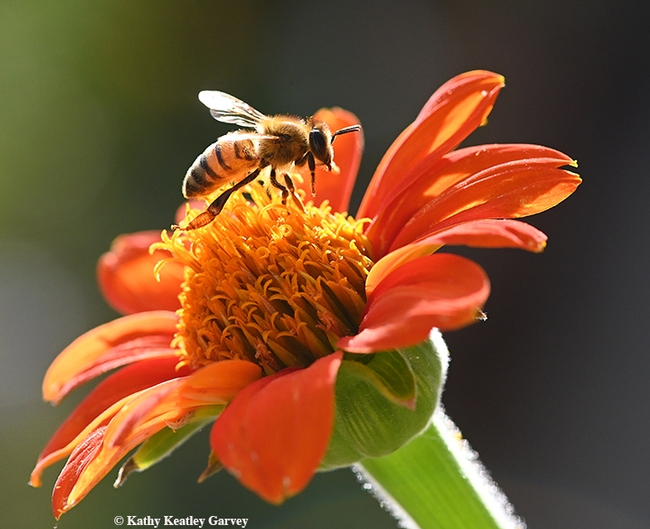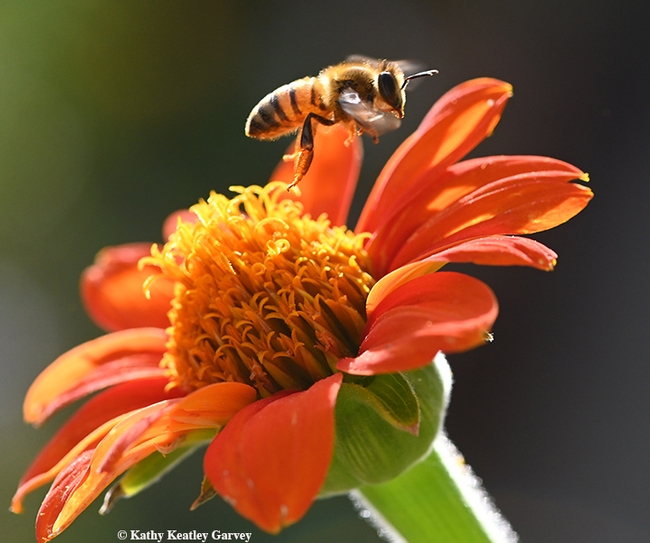Today is Labor Day 2019, a federal holiday celebrated the first Monday of September.
However, "the girls" are working, as they do every day of the year, weather permitting.
"The girls" are the worker honey bees.
Unless you keep bees or have access to a hive, you mostly see them foraging. But inside the hive, they are also nurse maids, nannies, royal attendants, builders, architects, dancers, honey tenders, pollen packers, propolis or "glue" specialists, air conditioning and heating technicians, guards, and undertakers.
They ensure the survival of the hive, but their life span is short.
"Worker bees live for approximately five to six weeks in the spring and summer," writes author and retired bee scientist and bee wrangler Norman Gary, emeritus professor of entomology at the University of California, Davis, in his book, Honey Bee Hobbyist: The Care and Keeping of Bees."Those reared in the fall live for several months--long enough for the colony to survive the winter--and are replaced by young bees in late winter or early spring."
In peak season, a honey bee queen can lay 1500 to 2000 eggs a day, and most of them will be worker bees, the most needed of the three castes (queen, drone and worker) in the hive. Although the smallest, but they do most of the work. The queen is the egg layer. The drone's role is strictly reproduction.
Worker bees forage within four to five miles of their hive. If you provide no nectar or pollen sources in your yard, they'll go elsewhere.
Theirs is a dangerous occupation. No thanks to predators (such as birds, praying mantids and spiders) and pesticides, many do not return home at night.
Like to photograph them? Try the "magic hour," which occurs about an hour before the sun sets. We love photographing them on Mexican sunflowers (Tithonia). The light is soft, warm and welcoming.
(Editor's Note: Interested in becoming a beekeeper or learning more about beekeeping? Be sure to check out the UC Davis-based California Master Beekeeper Program, directed by Extension apiculturist Elina Lastro Niño of the UC Davis Department of Entomology and Nematology. The next course is on managing varroa mites, a major pest.)
Attached Images:

A worker honey bee forages on a Mexican sunflower (Tithonia) in the magic hour, the hour before sunset. (Photo by Kathy Keatley Garvey)

Illuminated by the late afternoon sun, the worker bee prepares to fly to another Tithonia blossom. (Photo by Kathy Keatley Garvey)

A worker bee takes flight, lifting over a Mexican sunflower (Tithonia). (Photo by Kathy Keatley Garvey)